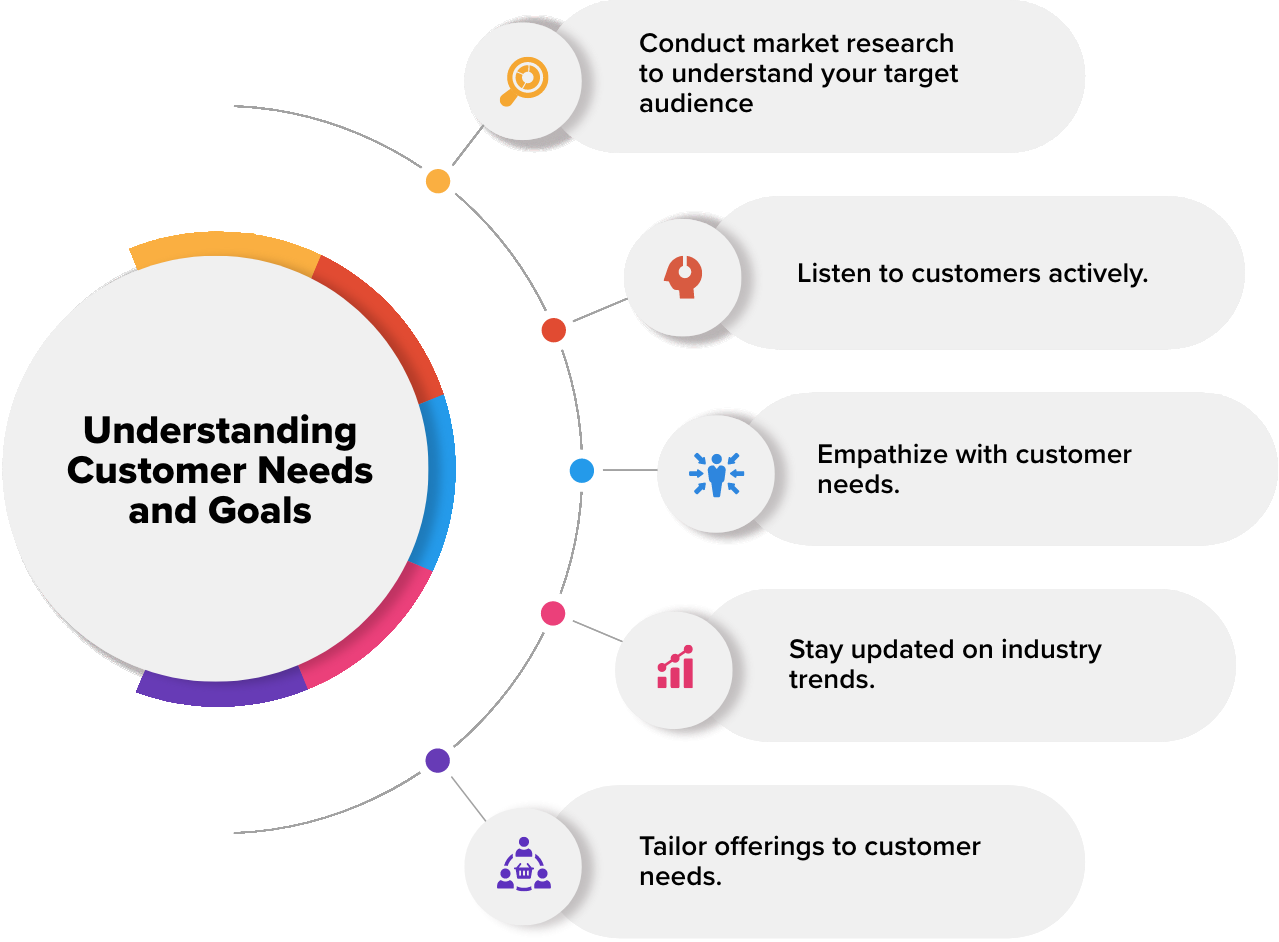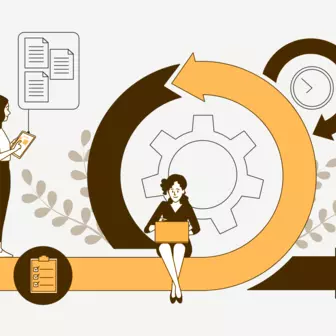"It takes 12 positive experiences to make up for one negative experience”, Ruby Newell-Legner, Customer Satisfaction Specialist"
Investing in customer service is one of the most important ways to grow a business. No longer can a company rely solely on passive advertising to drive sales.
They can easily find out the quality of any product or service before they buy it. 90% of Americans consider customer service to decide whether to do business with a company or not. Great customer service builds trust and loyalty, which can be a company's biggest asset
So what are the ways an organization can provide the best customer service?
This blog will help you understand the top 7 ways to deliver great customer service.
Powerful ways to deliver consistent customer service
The fundamental principle of exceptional customer service is to deliver on the promises made to the customers. To succeed, prioritize providing a consistent and satisfying customer experience with a comprehensive strategy.
This requires meticulous planning and execution. We've listed effective ways to provide outstanding customer service that can help achieve your business goals and vision.
Understand Customer Needs and Goals

Understanding customer needs and goals is a crucial component of any successful business strategy. Customizing your offerings to match the wants and needs of your target audience helps you build better relationships with your customers. So how can you effectively understand customer needs and goals?
Firstly, it's important to conduct thorough market research to gain insights into your target audience's demographics, behaviors, and preferences. This can be done through surveys, focus groups, and other forms of data collection. By analyzing this data, you can identify patterns and trends that will inform your product development and marketing strategies.
Secondly, actively listen to your customers through various channels such as social media, customer feedback forms, and customer support interactions. By gaining direct insights into your customers' experiences and pain points, you can improve your products or services accordingly.
Thirdly, put yourself in your customer's shoes and empathize with their needs and goals. To better meet their needs, understand their perspective, motivations, and challenges
Forth, stay up-to-date with the latest industry trends and innovations, and anticipate your customer's future needs and desires. By being proactive and forward-thinking, you can stay ahead of the competition and deliver exceptional value to your customers.
Lastly tailoring your customer service approach to meet the unique needs of your clients is essential for delivering the exceptional experience they deserve.
Leverage Technology
One way businesses are leveraging technology is through data analytics. By collecting and analyzing customer data, businesses can gain insights into their behavior, preferences, and needs. This information can be used to create personalized experiences, offer relevant product recommendations, and improve overall customer satisfaction. Data analytics also allows businesses to identify potential issues and address them proactively, reducing the risk of customer churn.
Another way businesses are leveraging technology is through the use of social media. Social media has become a powerful tool for businesses to connect with customers, build brand awareness, and drive engagement. Companies can use social media platforms to respond to customer queries, address complaints, and offer promotions. Social media also provides an opportunity for businesses to gather feedback and insights from customers, which can be used to improve products and services.
“85% of companies report that their customers are more digitally focused than expected, according to research by Microsoft”
Chatbots are another example of how businesses are leveraging technology for customer-centricity. Chatbots can provide customers with 24/7 support, answer common queries, and even resolve issues. Chatbots can also provide personalized recommendations based on a customer's purchase history, improving the chances of repeat business.
Leveraging technology is essential for businesses to remain customer-centric in today's digital landscape. Data analytics, social media, and chatbots are just a few examples of how technology can be used to create personalized and seamless experiences for customers. As technology continues to evolve, businesses must stay up-to-date with the latest trends and tools to provide the best possible customer experiences.
Ongoing Improvement
It's not enough to just offer great customer service initially – it needs to be an ongoing process. This requires listening to customer feedback, using metrics to measure effectiveness, training and empowering your team, using automation and AI, personalizing the customer experience, being proactive, continuously improving processes, and learning from mistakes. By committing to continuous improvement in customer service, businesses can create loyal customers who will recommend their products or services to others and help the company grow.
With one of our projects, we helped a client with regular reviews and updates of their Drupal development processes to ensure they are using the latest best practices and technologies. As part of this effort, we recently implemented a new automated testing process to identify and fix bugs more quickly and efficiently. This has led to faster development times and improved quality assurance.
Build a customer-centric culture
“Customer-centric culture boosts customer satisfaction rates by 60%, says a study by Temkin Group”
Building a customer-centric culture is the key to setting yourself apart from the rest. So how do you do it? Start by getting to know your customers. Conduct market research and gather feedback to gain a deeper understanding of their needs and preferences.
Once you know what they want, prioritize their satisfaction by ensuring every interaction with your company is positive and meets their needs.
Empower your employees to make decisions that benefit the customer and encourage a culture of innovation where ideas can be generated and implemented quickly. Don't forget to establish metrics to measure customer satisfaction and track your progress toward improving it.
Finally, create a customer-centric mindset by communicating the importance of the customer throughout your company and reinforcing this message through regular training and coaching sessions. By following these simple strategies, you'll create a culture that puts the customer at the heart of everything you do, and stand out from the crowd in the best way possible.
Effective Communication
"Effective communication is 20% what you know and 80% how you feel about what you know." - Jim Rohn.
Effective communication is a critical aspect of any successful project. At OpenSense Labs, we understand the importance of ensuring clear and constant communication with our clients, even when they are located in different time zones.
We make sure there is some overlap of time during our workday so that we can have real-time discussions with our clients. This allows us to address any concerns or queries they might have and also enables us to provide regular updates on the progress of their project.
By maintaining an open line of communication, we can build trust with our clients and keep them informed every step of the way. It also helps us to avoid any misunderstandings or delays that can arise due to miscommunication.
We leverage various communication tools and technologies such as Slack, Zoom, Google Meet, and email, to facilitate smooth and uninterrupted communication with our clients, irrespective of their location. We also schedule regular check-ins and progress meetings to ensure that the project is on track and the client is satisfied with our work.
Be Responsive
Being responsive in customer service is critical to maintaining positive relationships with your clients and stakeholders. This involves being available to address their questions and concerns throughout the project lifecycle.
One way to ensure responsiveness is to establish clear lines of communication with your clients from the start of the project. This could include regular check-ins, status updates, and progress reports. Additionally, it's essential to listen to your client's feedback and concerns actively and to offer solutions and alternatives when issues arise.
Being proactive in addressing potential problems or roadblocks can also help build trust and confidence in your ability to manage the project effectively. Finally, following up with your clients after the project is complete can help ensure that they are satisfied with the results and that any lingering issues or concerns are addressed. Project managers can build strong relationships with their clients and stakeholders by prioritizing responsiveness and open communication throughout the project and increasing the likelihood of repeat business and referrals.
Post Sales Support
of trust in your ability to deliver on your promises. Whether it's a product or service, they're making an investment that they expect to benefit their business somehow. As such, it's crucial to ensure that they have access to ongoing support and assistance after the sale to ensure that they're getting the most value possible from their investment.
Post-sales support helps to build trust and loyalty with customers by demonstrating that you care about their success and are invested in their ongoing satisfaction. This is particularly important in the B2B industry, where the stakes are often higher, and decisions are made based on long-term relationships and reputations.
Let's say a company sells a software tool that helps businesses manage their finances more efficiently. After a customer purchases the software, the company provides post-sales support to ensure that the customer is getting the most out of the tool.
The company might provide the following examples of post-sales support:
- Dedicated support channels: The company might offer a dedicated support email address or phone line that customers can use to reach out for assistance. The support team could guide how to use the software, troubleshoot issues, and answer any questions that the customer might have.
- Ongoing training and resources: The company might offer ongoing training resources to help customers get the most value from the software. This could include webinars, user guides, or knowledge-base articles that cover common use cases and best practices.
- Regular check-ins: The company might schedule regular check-ins with customers to ensure that they're using the software effectively and to address any concerns or issues that they might have.
- Feedback collection: The company might collect feedback from customers about their experience with the software and the post-sales support. This could involve sending out surveys, conducting focus groups, or providing an avenue for customers to provide feedback directly to the support team. The company could use this feedback to improve the software and the support experience for future customers.
By providing post-sales support, the company can ensure that the customer is satisfied with the software and has a positive experience with the company.
Conclusion
To summarize, consistent customer service is key to building strong customer relationships and a positive reputation for your business. By following the tips and strategies we've discussed - setting clear expectations, training your staff, leveraging customer feedback, and prioritizing consistency - you can create exceptional customer experiences that keep your customers coming back for more. Remember, happy customers, are loyal customers, and delivering top-notch customer service should always be a top priority for your business. So, go ahead and implement these practices, and watch your customer satisfaction soar.
At Opensnse Labs, we understand the importance of consistent customer service. We're committed to helping businesses like yours provide exceptional support to your customers. Our team of experts can provide the tools and resources you need to improve your customer service and build better relationships. Contact us at [email protected] to know more.
Subscribe
Related Blogs
Exploring Drupal's Single Directory Components: A Game-Changer for Developers

Web development thrives on efficiency and organisation, and Drupal, our favourite CMS, is here to amp that up with its latest…
7 Quick Steps to Create API Documentation Using Postman

If you work with API, you are likely already familiar with Postman, the beloved REST Client trusted by countless developers…
What is Product Engineering Life Cycle?

Imagine constructing a house without a blueprint or a set of plans. It will be challenging to estimate the cost and labor…



